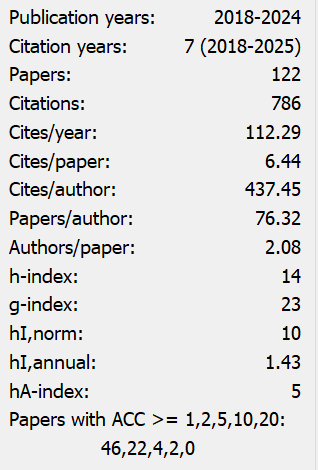The Impact of Population Aging on the Revenue-Expenditure Equilibrium of China's Basic Urban-Rural Residents' Pension Insurance Fund
Abstract
This article utilizes provincial-level data from 31 provinces in China spanning 2013 to 2023, sourced from the EPS Data Platform, to construct a fixed-effects model investigating the impact of population aging on the revenue and expenditure status of basic urban and rural residents' pension insurance funds. The results demonstrate a statistically significant negative effect at the 1% level, indicating that population aging exerts a suppressive influence on the fiscal balance of these pension funds. Robustness of the findings was confirmed through several tests: employing explanatory variables lagged by one period, winsorizing both the dependent and key independent variables, and incorporating additional control variables. Finally, regional heterogeneity analysis across eastern, central, and western China revealed that the pension fund balance in the eastern region is more sensitive to changes in population aging, whereas in the central and western regions, the fund balance ratio is more susceptible to the influence of government subsidies than to aging.
References
Li, X., & Chu, E. (2025). Population aging, household debt and consumer expenditure. Nankai Economic Research, (02), 40–60.
Li, X., Zhang, Y., & Zhao, Y. (2020). Population aging, urbanization and urban employees' pension insurance payment ability. Financial Review, 12(01), 94–114, 125–126.
Razin, A., Sadka, E., & Swagel, P. (2002). The aging population and the size of the welfare state. Journal of Political Economy, 110(4). https://doi.org/10.1086/340780
Wang, S., & Liu, L. (2024). Will population aging exacerbate the "de-reality" of enterprises? ——Based on data at the prefecture-level city level. Modern Financial Research, 29(11), 3–13.
Wu, X., Chen, F., & Liu, Y. (2024). Trends, impacts, and responses to population aging. Financial Insights, (08), 28–36.
Xu, H., & Shen, Y. (2025). How can companies respond to population aging? ——The perspective of digital transformation. Journal of Economics and Management, 47(01), 49–65.
Yuan, Z., & Song, Z. (2000). Population age structure, pension insurance system and the optimal savings rate. Economic Research, (11), 24–32+79.
Zang, X., & Zhou, B. (2024). Mechanism and mitigation path of population aging affecting household financial vulnerability. Journal of Zhejiang Gongshang University, (03), 101–114.
Zhang, X., & Huang, Y. (2011). Empirical analysis of the relationship between population aging and pension insurance fund expenditure. Business Times, (13), 100–101.
Zhao, X., Wang, H., & Liu, T. (2017). Population aging, pension insurance and residents' savings rate. China Soft Science, (08), 156–165.

This work is licensed under a Creative Commons Attribution 4.0 International License.
Copyright for this article is retained by the author(s), with first publication rights granted to the journal.
This is an open-access article distributed under the terms and conditions of the Creative Commons Attribution license (http://creativecommons.org/licenses/by/4.0/).


























